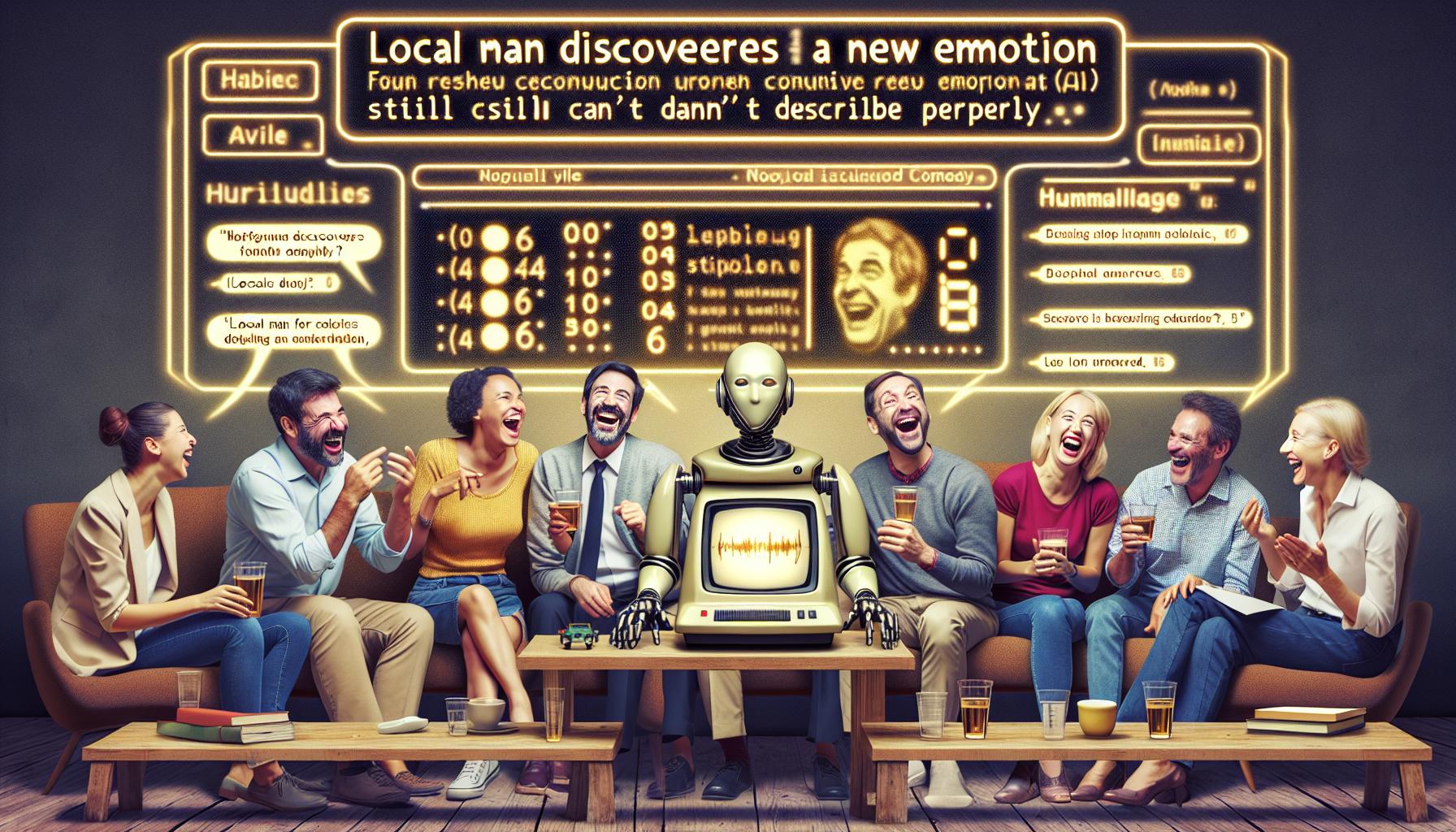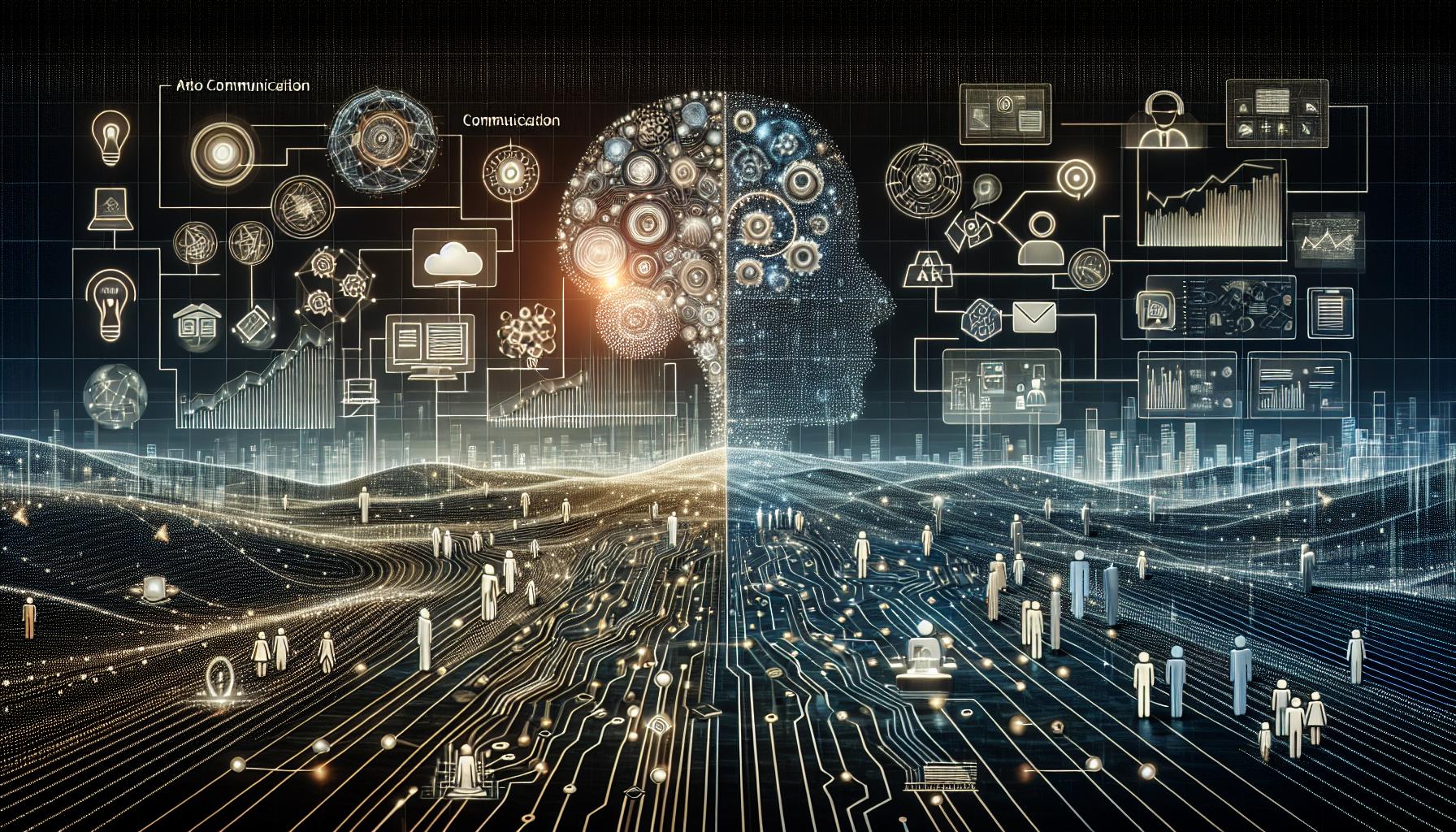AI Jokes: Study Finds ChatGPT Matches The Onion's Humor - An In-Depth Analysis

Introduction
In recent times, the prowess of Artificial Intelligence (AI) has advanced to uncharted territories. From excelling in code generation to producing coherent content and poetry, A.I. has continuously pushed the boundaries of what machines can achieve. However, a recent study conducted by psychology researchers at the University of Southern California presents an intriguing frontier: humor. Humor, a deeply subjective and complex human trait, has challenged A.I. researchers for years. This blog delves into the study's findings, which reveal that ChatGPT, an A.I. language model, has comedic abilities that match not only laypeople but also professional comedic writers.
In this article, we will answer three key questions raised by the research: What specific elements of comedy does ChatGPT excel at compared to laypeople and professional writers? How could future advancements in A.I. improve ChatGPT's ability to deliver jokes with proper timing and intonation? And finally, what other subjective areas, apart from humor, could benefit from AI's pattern recognition abilities?
The Study: An Overview
The study at the center of this discussion aimed to investigate ChatGPT's ability to create humor. Conducted through two experiments, the study involved participants recruited via Amazon Mechanical Turk and students from the University of Southern California. The experiments tested ChatGPT's comedic abilities against those of human participants and professional writers from The Onion, a well-known satirical news outlet.
First Experiment: Participants vs. ChatGPT
The first experiment involved 123 US-based laypeople recruited through Amazon Mechanical Turk. These participants were given three humor production tasks:
- Generating humorous phrases for acronyms.
- Filling in the blanks with humorous answers for prompts.
- Creating humorous responses to fictional scenarios.
ChatGPT 3.5 was also given these tasks, producing a total of 180 comedic responses. These responses were then evaluated by 200 US-based CloudResearch-approved MTurk workers, who rated a random subset of 54 responses on a 7-point Likert scale (0 = Not Funny at All; 6 = Very Funny). The results showcased that ChatGPT 3.5 outperformed the majority of human participants in producing humorous content.
Second Experiment: ChatGPT vs. The Onion Writers
Moving beyond laypeople, the second experiment compared ChatGPT 3.5 against professional comedic writers from The Onion. In this task, 217 students from the University of Southern California rated the funniness of 10 satirical headlines (5 created by A.I. and 5 by humans). The results revealed that ChatGPT's headlines were rated on average as funny as those by professional writers. Impressively, ChatGPT produced two of the four top-rated headlines, including the highest-rated one.
Strengths of ChatGPT in Comedy
One of the core questions raised by the study is: what specific elements of comedy does ChatGPT excel at compared to laypeople and professional writers? Based on the study's findings, the key strengths of ChatGPT in humor lie in the following areas:
- Pattern Recognition: ChatGPT's ability to recognize and replicate patterns is crucial. Comedy often hinges on recognizing patterns in language and then subverting them in clever ways. ChatGPT's extensive training on large datasets enables it to mimic these patterns effectively.
- Creativity Within Constraints: The tasks given to both the participants and ChatGPT required creativity within specific constraints (e.g., acronyms, prompts, scenarios). ChatGPT demonstrated an ability to generate humorous content by creatively operating within these given parameters.
- Consistency: ChatGPT maintained a consistent level of humor across various tasks, whereas human participants may have varied widely in their comedic abilities.
Future Advancements: Timing and Intonation
Another intriguing question pertains to how future advancements in A.I. could improve ChatGPT's ability to deliver jokes with proper timing and intonation. While ChatGPT has impressive textual humor capabilities, it lacks the human elements of timing and vocal delivery. However, promising developments on the horizon include:
- Integration with Voice Synthesis Technologies: Combining ChatGPT's text generation with advanced voice synthesis technologies could allow the A.I. to deliver jokes with nuanced timing and intonation, making the humor more impactful.
- Real-time Feedback Loops: Implementing real-time feedback mechanisms where the A.I. can analyze audience reactions to adjust its delivery in real-time could bring it closer to human-like comedic performances.
- Machine Learning from Comedians: Training the A.I. specifically on stand-up comedy performances and other live comedic acts could help it learn the subtleties of timing, pauses, and vocal inflections that are critical in humor delivery.
Other Subjective Areas Surmountable by AI
Lastly, apart from humor, what other subjective areas could benefit from AI's pattern recognition abilities? Here are a few possibilities:
- Art and Design: A.I. can analyze artistic patterns and generate creative pieces of art, design logos, and even develop new fashion trends by learning from existing styles and predicting new ones.
- Music Composition: A.I. has the potential to recognize musical patterns and compose original music pieces in various genres, blending different styles and creating innovative compositions.
- Emotional Support: AI-driven virtual therapists can recognize patterns in conversations and provide emotional support, potentially improving mental health care accessibility.
- Storytelling: A.I. can assist in generating engaging narratives for books, films, and video games by understanding plot structures, character development, and thematic elements.
- Education: Personalized learning experiences can be created where A.I. recognizes individual learning patterns and adapts the educational content to suit the learner's needs.
Conclusion
The study conducted by the University of Southern California underscores the remarkable capabilities of ChatGPT in the realm of humor. By outperforming laypeople and matching professional comedic writers, ChatGPT has shown its strength in recognizing and manipulating the patterns that constitute comedy. While it still lacks the human elements of timing and intonation, future advancements in A.I. offer promising prospects for bridging this gap. Moreover, the potential applications of AI's pattern recognition abilities extend far beyond humor, promising a future where machines can contribute to various subjective, creative fields.

 ™
™

